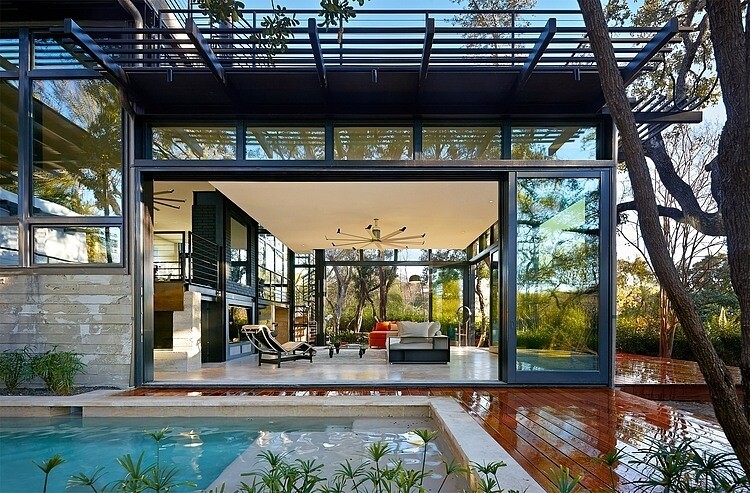Natural light plays a crucial role in shaping the atmosphere of a home. It can enhance the aesthetic of a room and uplift our spirits when we enter a space. At PA Home, we understand the importance of natural light, which is why we often incorporate clerestory windows into our designs to maximize daylight throughout the home.
However, when first exploring design options, many clients ask, “What are clerestory windows?” Then let’s explore about clerestory windows together!
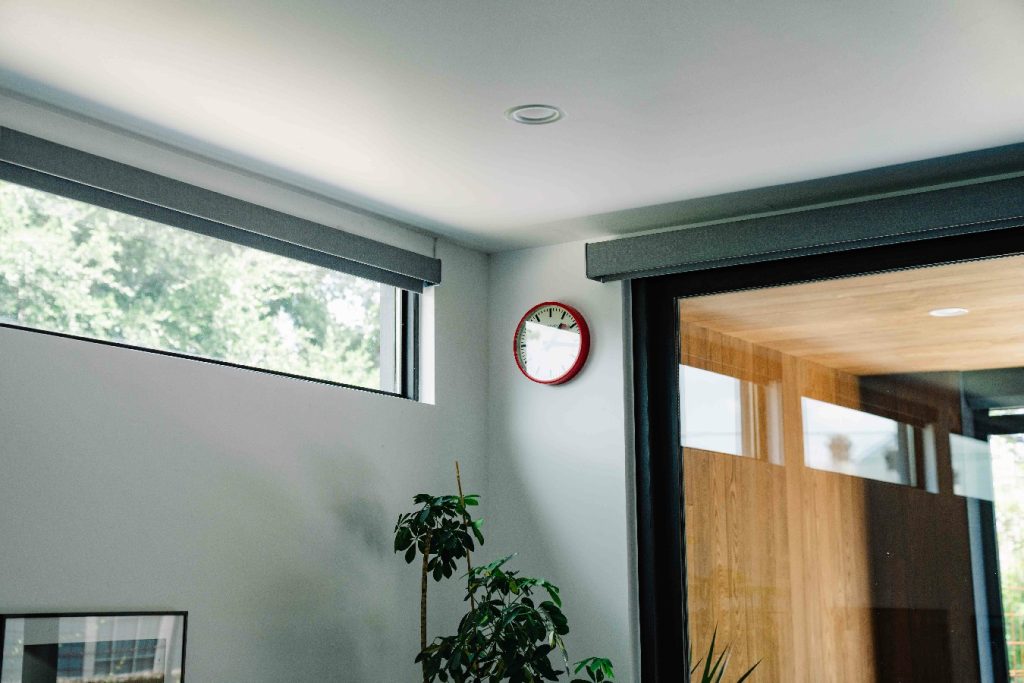
What are Clerestory Windows?
A clerestory window is a band of windows set high on a wall—usually tucked right under the roofline—so daylight washes the room without stealing valuable eye-level wall space. Think soft, ambient light that brightens a plan while leaving room below for art, shelving, or cabinetry.
Designers use clerestory windows to solve real layout problems: they re-introduce daylight to deep plans, interior rooms, and spaces shaded by deep overhangs; when paired with operable sashes, they can vent rising warm air and support passive-cooling strategies. In short, they’re a light source and a comfort tool.
Although many people associate clerestories with mid-century modern homes, the idea is ancient—long before steel and glass, builders raised windows high in temples and cathedrals to illuminate large interiors. That heritage is why the form feels both timeless and modern today.
And when you want control, contemporary systems allow discreet motorized operators and thoughtful glazing choices, so you get the daylight you want with the privacy and efficiency you need.
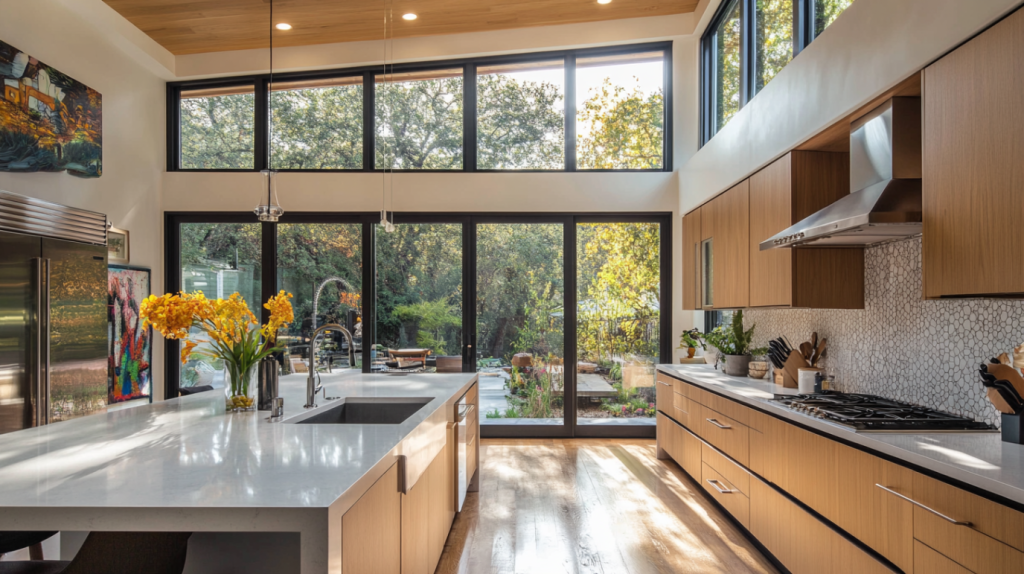
 More Concerns
More Concerns
History of Clerestory Windows
The idea is ancient. Clerestories—high bands of windows that sit above eye level—first appeared in Egyptian temples to float daylight deep into vast interiors. Romans then formalized the strategy in basilicas, lifting a windowed upper wall above the side aisles so light could spill onto the nave; early Christian and Byzantine builders carried the practice forward.
Through the Middle Ages the clerestory became the signature “light engine” of great churches. Romanesque walls admitted small, high windows; Gothic engineering (rib vaults, flying buttresses) let masons push walls taller and thinner, expanding the clerestory into glazed tapestries of stained glass—architecture designed, quite literally, for light.
By the 19th century, the idea jumped from cathedrals to civic halls, train sheds, and arenas—any place that needed daylight without side-wall views. Manuals and histories from this period routinely point to clerestories as a practical way to brighten large-span spaces.
In the 20th century, modernists reframed the typology for houses. Prairie School and Mid-Century Modern architects—Frank Lloyd Wright among them—set continuous clerestory bands under long eaves to wash rooms with soft light while preserving wall space below. That’s why so many people now associate clerestories with mid-century homes, even though the lineage is much older.
Today the form is back in force for its comfort and energy logic: high windows can tame glare, promote stack-effect ventilation, and pair with overhangs or exterior louvers for passive control—benefits visible across contemporary residential projects and case studies.
What are the Benefits of Clerestory Windows?
Ambient Daylight
Gentle daylight that’s easy to live with. Set high on the wall, clerestory windows wash rooms in ambient light instead of sharp, direct beams. The result is brighter spaces with fewer glare hot-spots than you’d get from low wall windows or unshaded skylights.
Privacy and Space
Privacy up top, usable walls below. Because sightlines are above eye level, you keep views of sky and treetops without feeling on display—and you free valuable wall real estate for cabinets, art, and storage. Many projects use clerestories specifically to protect privacy while still pulling in daylight.
Natural Ventilation
Real comfort gains through passive ventilation. Operable clerestory sashes act like a thermal chimney: warm air rises and exhausts high, drawing cooler air from lower openings. Pairing high windows with fans or sensors can make this a reliable, low-energy cooling strategy.
Energy Efficiency
Energy and thermal performance that makes sense. High windows can extend winter sun into living zones while deep eaves or exterior shading block high summer sun. More daylight also means less reliance on artificial lighting—good for bills and comfort when detailed correctly.
Design Flexibility
Design flexibility and a lighter architectural feel. Clerestory bands can follow the roofline, creating the “floating roof” look; they also combine well with selective skylights to keep deep plans from feeling closed-in while maintaining control over light and views.
Use Clerestory Windows to Transform Rooms
Wondering where clerestory windows work best? Let’s take a look at the ideal spaces where they can truly shine.
1
Bathrooms
High sills bring in sun and sky while keeping neighbors out of sight—no frosted glass required. In tighter sites, keep the sill height at or above typical overlooking thresholds (≈1.7 m/5’7″) and consider discreet motorized operators for purge-venting steam.

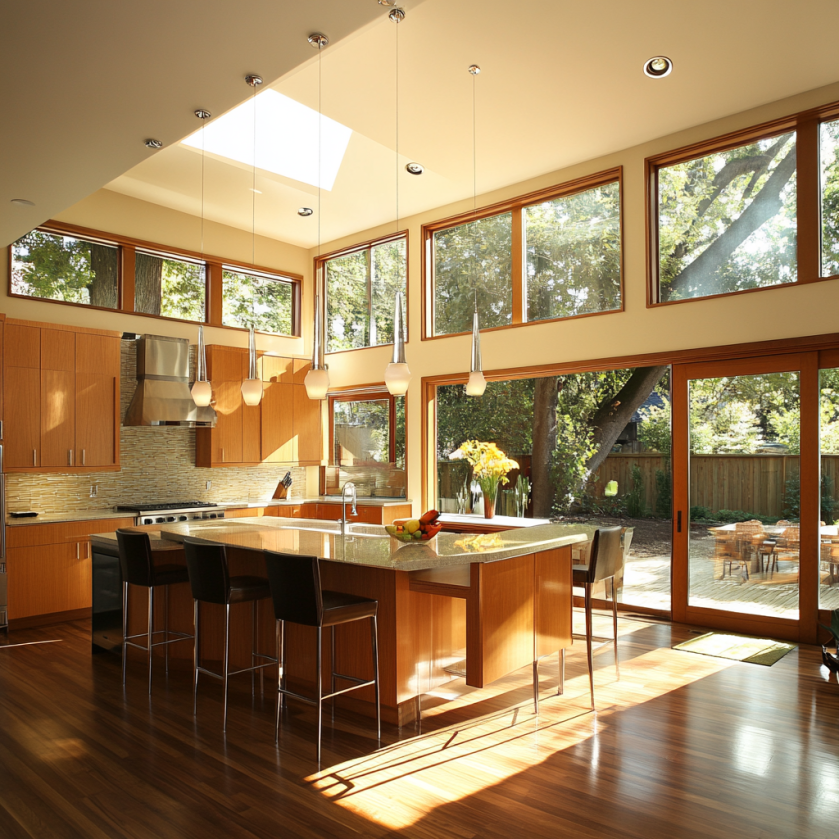
2
Kitchens
Place a continuous clerestory window above uppers to brighten counters without sacrificing storage or adding view clutter. It’s also a good alternative if you don’t want a skylight over food prep.
Try this: put the band above deep overhangs to “recover” light a porch roof would otherwise steal.
3
Living room

Run a clerestory band just under the roofline to wash the volume in ambient light while keeping eye-level walls free for art, shelving, or media. If you need more punch at the room’s center, pair a small skylight with the clerestory for a balanced, non-glary mix.
Try this: follow the roof geometry (shed or sawtooth) so the window line feels intentional, not tacked on.
4
Stairwells
An operable clerestory turns a stairwell into a thermal chimney: warm air exits high, pulling cooler air from lower windows. Add rain/wind sensors if the window is hard to reach.
Try this: size a narrow, continuous band to “pull” daylight down the stair run without harsh hotspots.
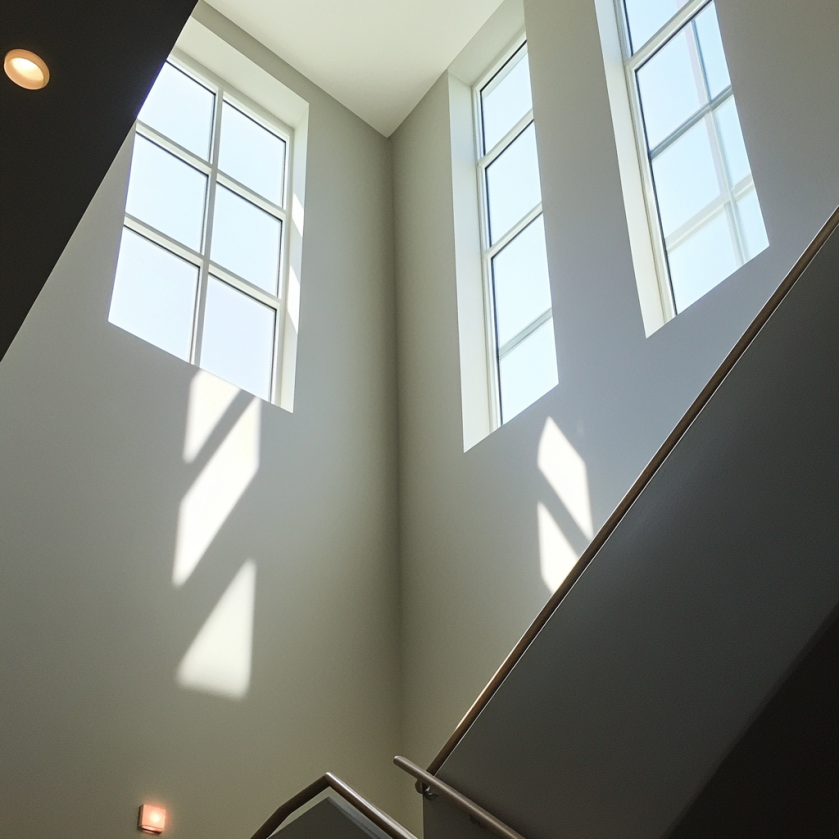
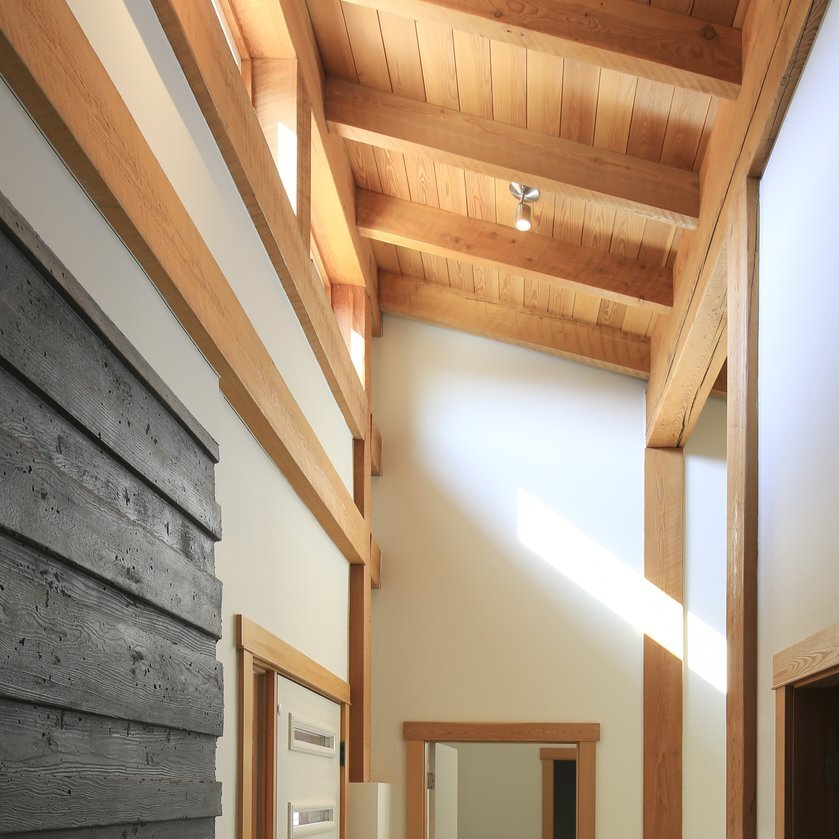
5
Corridors
Where interior walls block conventional windows, raise the roof edge and slot a clerestory so daylight penetrates the core; in long halls, the band reduces the “tunnel” feel. Sawtooth or shed-roof clerestories are especially effective here.
6
Bedrooms
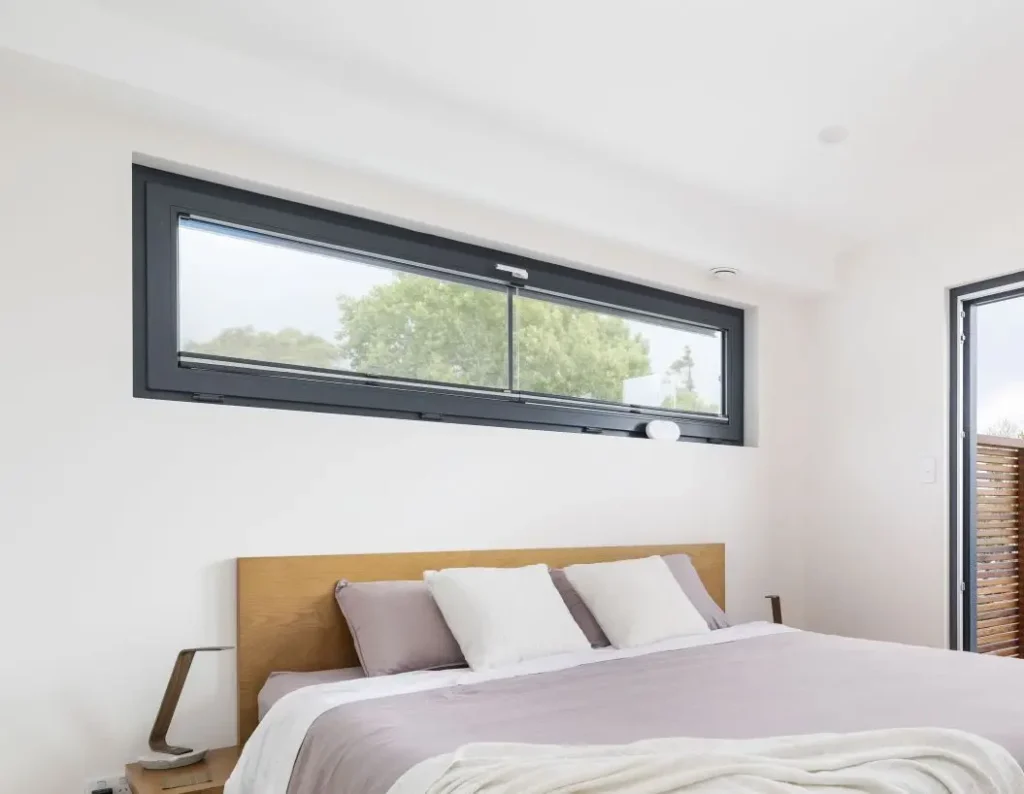
Use high windows for a soft, diffuse glow that won’t dominate screens or sleep. Frame treetops and sky while keeping furniture layouts flexible below.
-
💡
Pro Tip: In hot climates, combine clerestories with exterior shading (deep eaves or fixed louvers) and low-SHGC glazing; in cold climates, aim south where possible and use higher-gain glass judiciously for winter sun. You’ll keep the glow and ditch the glare.
Examples of Projects with Clerestory Windows
From modern homes to adaptive reuse, clerestory windows are used in various projects to enhance light, ventilation, and design flexibility.
Australian Free-standing Timber Home — Bryant Alsop
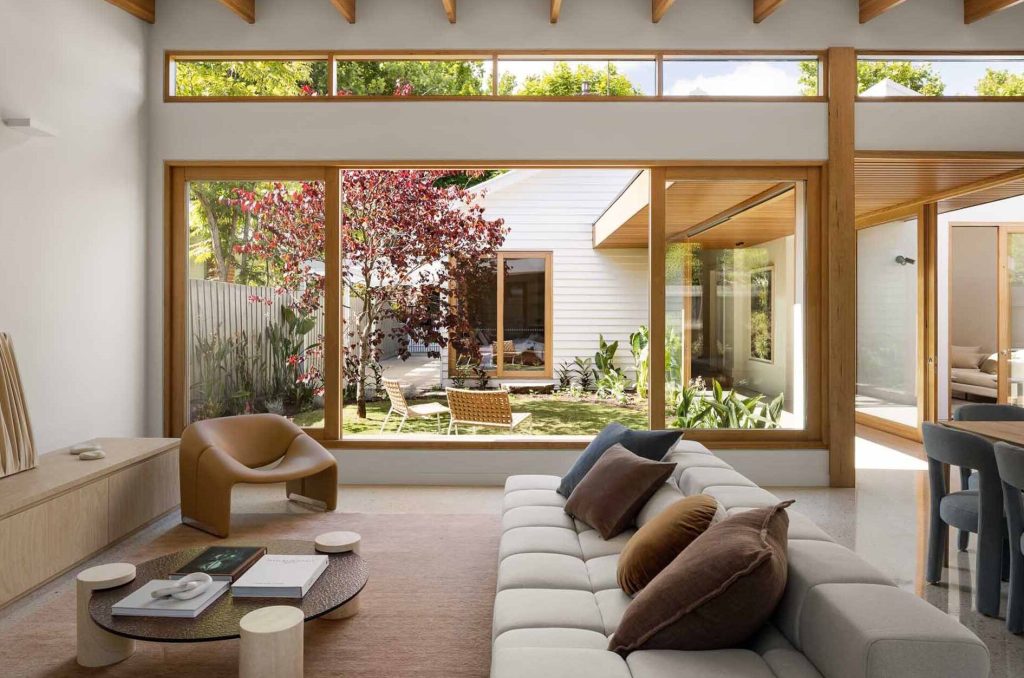
A contemporary renovation uses a clerestory strip to lift daylight across the new living room without giving up privacy or storage.
Studio in Dutchess County — GRT Architects
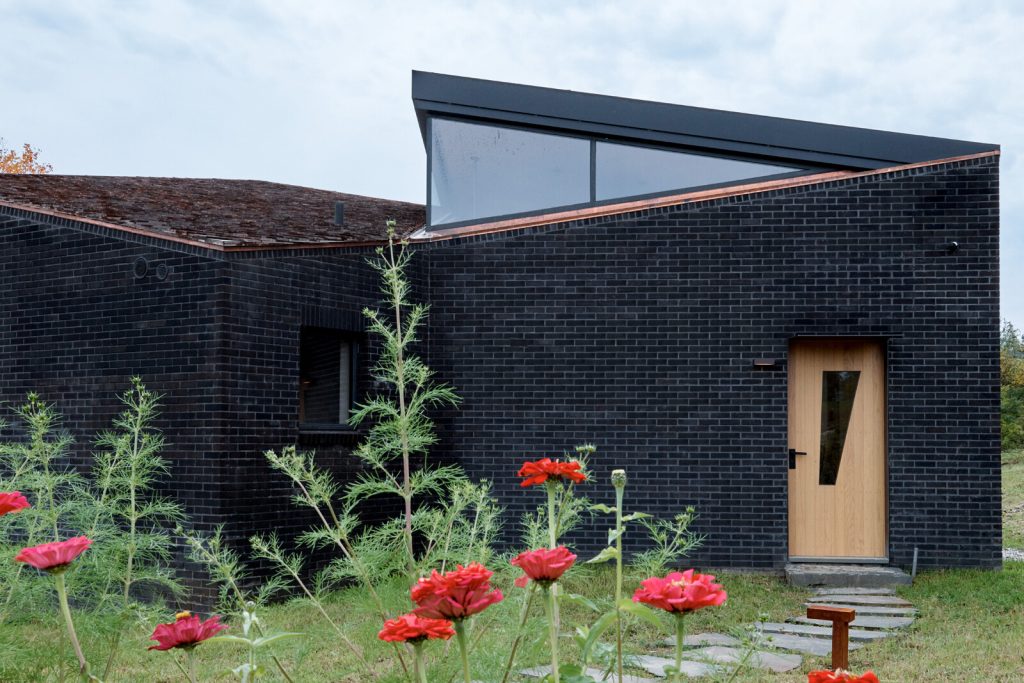
Three small volumes each wear a beak-like clerestory; the pinwheel plan gathers light from multiple orientations while keeping walls usable.
Home in California — Dean Nota
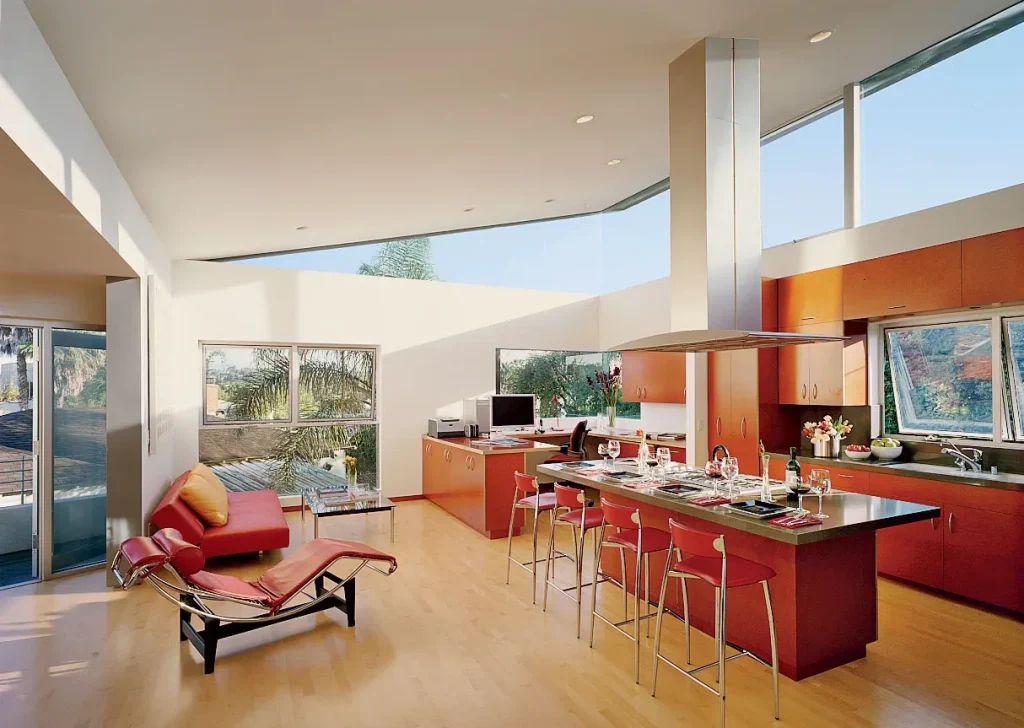
This kitchen features modern clerestory windows, positioned between the ceiling and the walls, cleverly allowing ample natural light to flood the space, enhancing its already open and airy feel. The glass above the windows is also designed to be operable, providing ventilation and promoting airflow within the kitchen.
Seaside Home in Auckland — Pip Cheshire
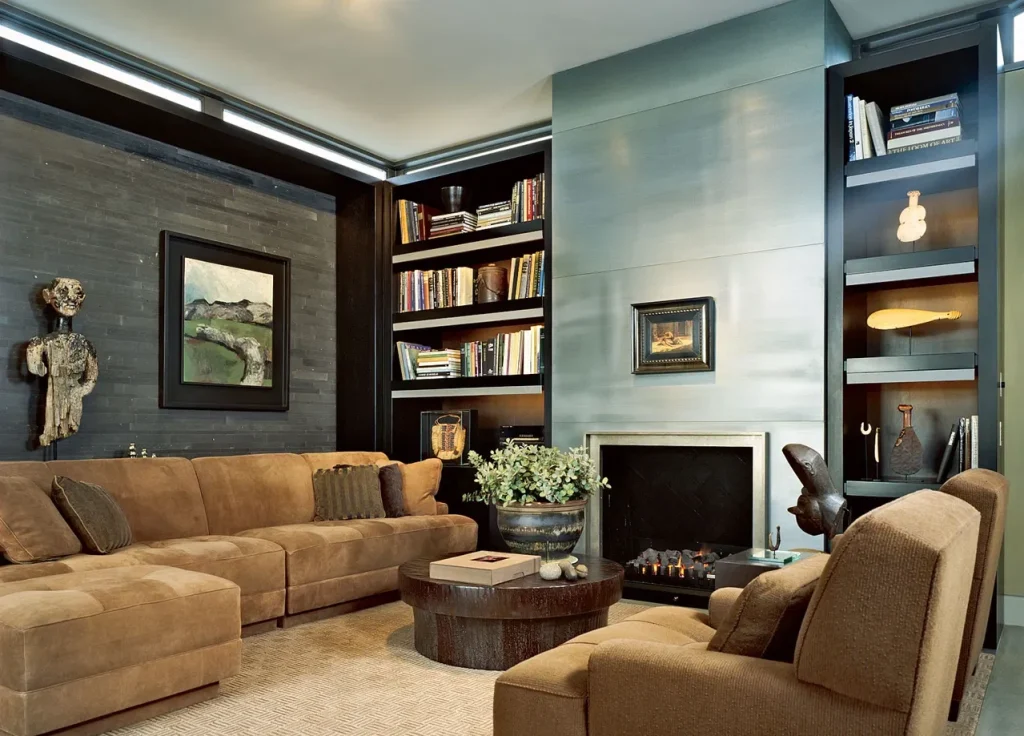
A narrow, high-set clerestory window that bathes the study in soft, ambient light while leaving the walls below free for books and artwork.
How Much Does Clerestory Window Cost?
The cost of clerestory windows depends on factors like size, materials, and design complexity. On average, a basic installation can range from $800 to $1,800 per window, while larger or custom designs may start at $1,000 and increase based on the complexity. Mid-range projects, involving 3-4 windows, typically cost between $1,500 and $2,500.
High-end installations, such as those with operable windows or premium materials, can push the cost higher. Additionally, the cost of installation may increase if structural modifications are needed, or if energy-efficient glass is chosen, although the latter can result in long-term savings.
For a more precise estimate, it’s best to consult with a local contractor to account for specific factors like design, location, and materials.
Where to Buy Clerestory Windows?
Want to buy clerestory windows for your projects? Clerestory windows can be purchased from a variety of places, including local window suppliers, specialized contractors, and online retailers. For high-quality, custom-designed clerestory windows, it’s best to contact manufacturers who offer tailored solutions to fit your specific design and functional needs. Many suppliers also provide guidance on installation and energy-efficient glass options.
If you’re looking for modern clerestory windows that blend design, performance, and durability, PA Home is your go-to partner. We offer a range of customizable window options perfect for enhancing your space.
Contact us today to discuss your project and get expert advice on selecting the ideal window designs for your needs.
FAQs about Clerestory Windows
A clerestory window is positioned high on a wall, usually near the ceiling, to allow natural light into the room without compromising privacy or wall space. It’s often used in large, open spaces and can be operable for ventilation.
A transom window, on the other hand, is typically placed above doors or windows and is usually smaller in size. It is often fixed, providing light and a decorative element to a space, and is typically used in more traditional or decorative applications.
Clerestory windows that are operable (such as awning or casement windows) paired with energy-efficient glass can promote natural ventilation. By allowing warm air to escape through the top of the space, while cooler air enters through lower windows, they help regulate temperature and improve airflow.
While there are no strict “standard sizes” for clerestory windows, most manufacturers offer common sizes based on typical room dimensions and building codes. For example, windows may come in fixed sizes like 24″x 48″, 36″x 72″, or larger, but these can usually be customized to suit individual needs.
Clerestory windows can be more expensive than regular windows due to their custom nature and high placement. They often require structural adjustments, such as building up the wall to accommodate the window, which can increase the installation cost. The choice of materials (e.g., energy-efficient glazing, operable windows) also adds to the cost.
Installing roof clerestory windows requires careful consideration of structural integrity to ensure the roof can support the weight and load of the windows. Waterproofing is also crucial, as roof windows are more prone to leaks if not properly sealed. Additionally, maintenance can be more challenging due to their location on the roof, requiring periodic inspections and cleaning, especially if the windows are operable.


